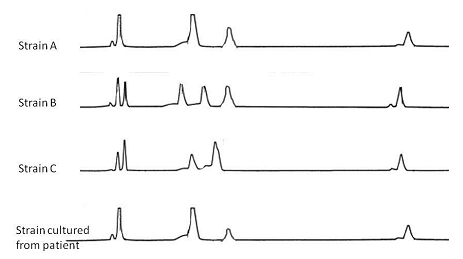Which biome has the fewest kinds of species?
a. tundra
b. taiga
c. grassland
d. desert
e. It is not possible to determine this based on the information provided.
A
You might also like to view...
The nucleotides within DNA are composed of a
A. phosphate group, ribose sugar, and nitrogenous base. B. sulfur group, ribose sugar, and nitrogenous base. C. phosphate group, deoxyribose sugar, and nitrogenous base. D. sulfur group, deoxyribose sugar, and nitrogenous base. E. phosphate group, hexose sugar, and nitrogenous base.
Mutation rates of human genes are expressed as the number of ____
a. nucleotides substitutions per gene b. frameshift mutations per genome c. mutated alleles per genome d. induced mutations per generation e. mutated alleles per gene in each generation
To make sure they treat the infection with the correct drug, doctors order DNA fingerprinting of a sample of bacteria taken from the patient for comparison to known fingerprints of strains A, B, and C. With which antibiotic should the patient be treated?
A patient is admitted to the hospital with a mysterious infection. After running some standard tests, doctors believe that the infection is caused by one of three closely—related bacterial strains — A, B, or C — that are hard to treat because they have become resistant to some antibiotics.
Strain A is resistant to antibiotic beta and antibiotic omega
Strain B is resistant to antibiotic alpha and antibiotic omega
Strain C is resistant to antibiotic alpha and antibiotic beta

A. antibiotic alpha.
B. antibiotic beta.
C. antibiotic omega.
D. antibiotic beta or antibiotic omega.
E. any antibiotic will work to kill the bacteria causing the infection.
TLRs are
A) phagocyte receptors that detect PAMPs. B) the coatings of pathogens by complement. C) molecules that damage cells, resulting in cell lysis. D) present in intact skin, sebum, tears, etc. E) nonspecific leukocytes that secrete toxins onto the surface of virally infected cells.